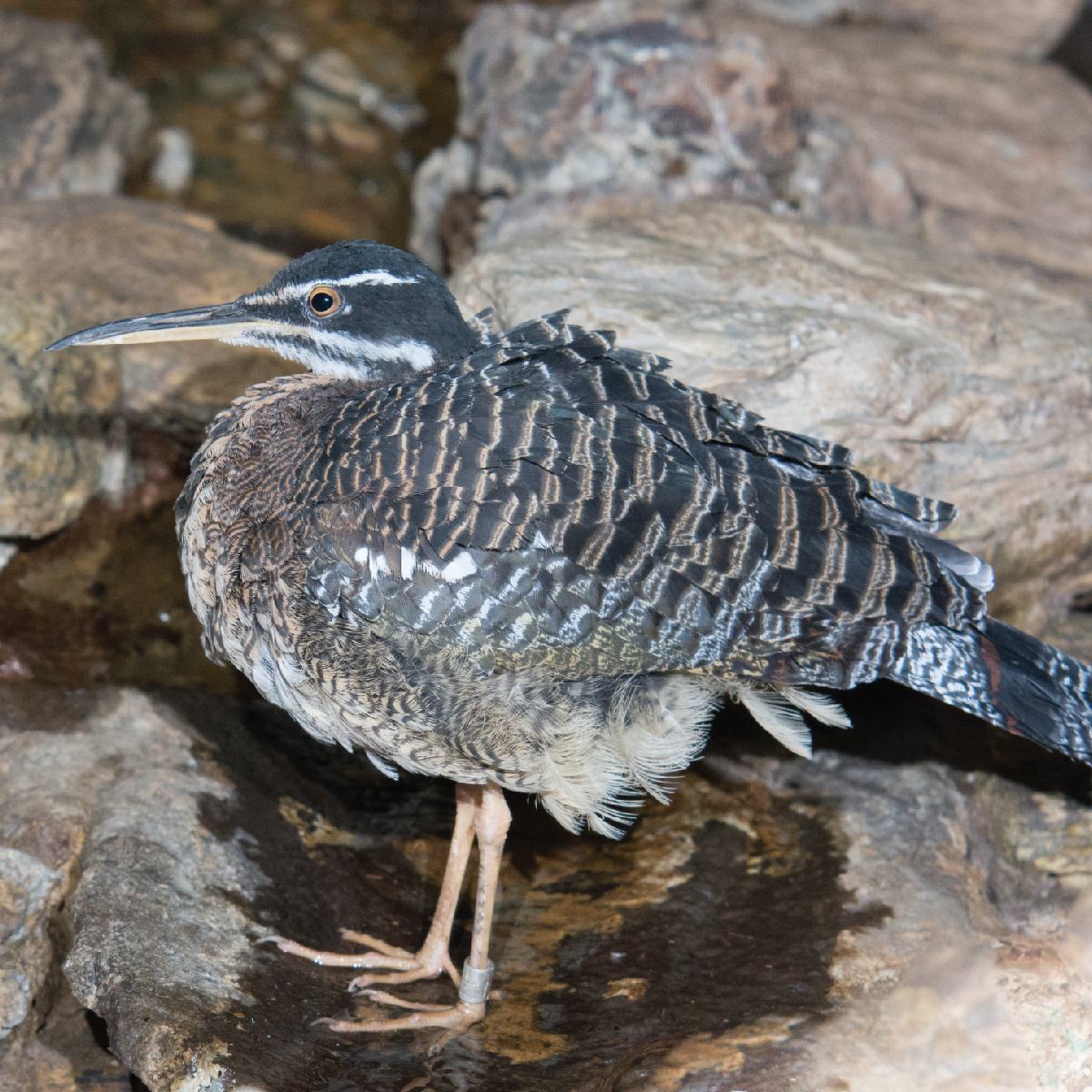
Sunbittern
Eurypyga helias major
Did you know?
- The only member of the Eurypygidae family.
- Sunbitterns prefer to walk as opposed to flying.
- If alarmed, they will fly up into the treetops and unfold their wings as a sign of defense.
- They can be found individually and in pairs.
- Females lay two or three eggs in a clutch.
Defensive Coloration
These birds are not social so they do not require much communication except for protection. They have chestnut eye-shape patches on their wings and tail. When threatened, they will display these patches and hiss. In order to protect their nest, adults will mimic a wing injury and draw predators away.
Aquatic Eaters
Sunbitterns hunt near the water's edge, eating mostly fish, amphibians, insects and crustaceans. They are important predators that help to balance aquatic ecosystems.
Threat Level
- Unknown
- Common
- Near Threatened
- Threatened
- Endangered
- Critically Endangered
- Extinct in the Wild
Common
The Sunbittern is widespread and abundant.
Range
Central and South America
Habitat
Tropical forests, near water

We care about sunbitterns
The Saint Louis Zoo participates in the Species Survival Plan® for sunbitterns. This is a cooperative breeding program, with a number of zoos working together to ensure the survival of this species. We also support them in the Bird House at the Zoo. Learn more about how we are helping wildlife around the world: Dedicated to Conservation
Find this animal in Historic Hill

SAINT LOUIS ZOO ZONE
Historic Hill
Historic Hill is a lovely stroll through one of the oldest parts of the Saint Louis Zoo. From the 1904 World’s Fair Flight Cage to the Spanish architectural flavor of the 1920s in the Bird House, Primate House and Herpetarium to the finishing touches of our thoroughly modern exhibits, this area of the Zoo has a unique ambiance and a nostalgic history that make it a great destination.

